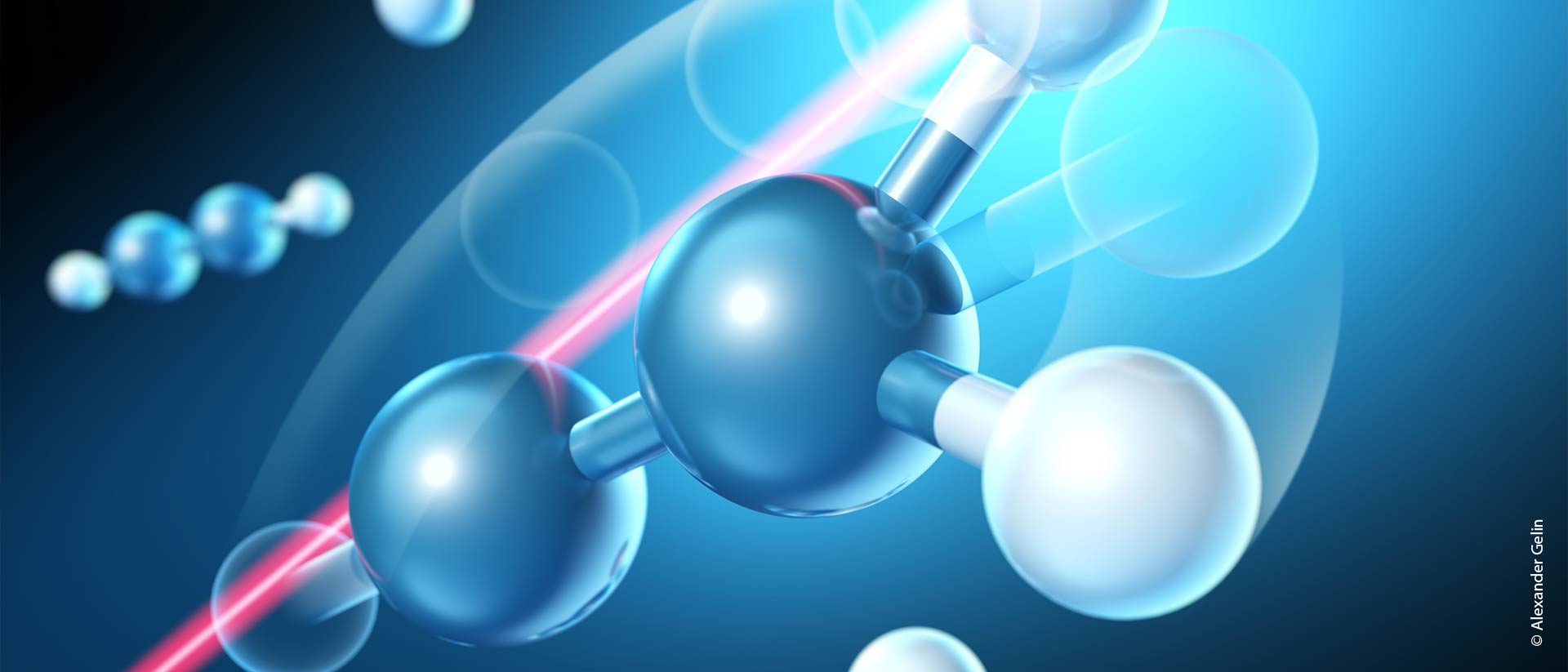Lasers and the future of drug synthesis

Let’s imagine we’re in a large pharmaceutical research laboratory in the year 2060. The only sound is the purring of the cooling system, accompanied now and again by the soft hum as a conveyor belt jerks into action. The conveyor belt is laden with tiny reaction vessels, each containing a minimal amount of liquid, which are successively transported to a workstation. Once there, each vial is placed at the center of a battery of tiny stainless-steel needles, all targeted on the liquid in the vessel. What then emerges from each of these nozzles is a stream of ultrashort pulses of laser light, emitted at a rate of 100,000 pulses per second. The whole procedure takes less than 5 seconds. Then the next vial is brought into position.
What actually happens in each vial while its contents are under laser bombardment is a precisely programmed series of changes in the structure of the molecules dissolved in the liquid. The sequence of light pulses progressively alters the configuration of the atoms in the starting molecules, and when the bombardment is over, the structure of the original solutes has been transformed. In this way, the bioengineers of 2060 can create chemical substances – with the help of laser light – which are highly specific and maximally effective as therapeutic agents.
As yet, the idea that carefully tailored sequences of light flashes could be used to reorient and redistribute the atoms in molecules in precisely predictable ways to produce new compounds and new materials is but a gleam in the eyes of laser physicists and organic chemists. But it is already much more than a dream. It is already possible to manipulate individual atoms in molecules by purely optical means. Researchers at the Max Planck Institute for Quantum Optics and LMU Munich have just demonstrated how it can be done by using light to modify the structures of a simple hydrocarbon compound. Specifically, they used an ultrashort laser pulse to detach a hydrogen atom from one end and then directed it to the other end, where it re-attached to the chain.
The whole process was over in an unimaginably short space of time – within a millionth of a billionth of a second. In the experiment, a single ultrashort laser pulse interacted with a molecule of acetylene gas. The impulse imparted to the symmetrically arranged chain HC≡CH, which has a hydrogen atom at each end, resulted in the ejection of electrons so that the now positively charged ion was oriented within the optical field associated with the pulse. This destabilized the remaining hydrogen atom, which migrated to other end to produce the molecule vinylidene: HC≡CH –> HCH+ (+C+ + electrons).
All chemical processes involve displacements and rearrangements of electrons and atoms within molecules, and are therefore based on electronic and atomic motions. Laser technology now makes it possible to influence and modify such motions to a limited extent. “Our experiments have shown that we are now able, not only to direct the motions of electrons, but also to control the behavior of hydrogen atoms, which are about 2000 times more massive than an electron,” says Prof. Matthias Kling, who heads the research group in Ultrafast Nanophotonics, which was part the LMU team involved in the work.
With this experiment the Munich researchers have succeeded in redefining the range of applications of laser light for the reconfiguration of matter. “We hope that this method will in future enable us to deconstruct and reassemble all kinds of substances at will,” Kling adds.
Indeed, the technology may well – perhaps in the not too distant future – form the basis of an entirely new approach to the design and production of therapeutic agents for medical use. Very often, a relatively minor change in its chemical structure can endow a given compound with an entirely new biochemical action in an organism. It is also conceivable that laser-based chemical synthesis will permit future bioengineers to design agents that interact with their intended targets with such precision that minimal doses are sufficient to achieve the desired physiological effect.













